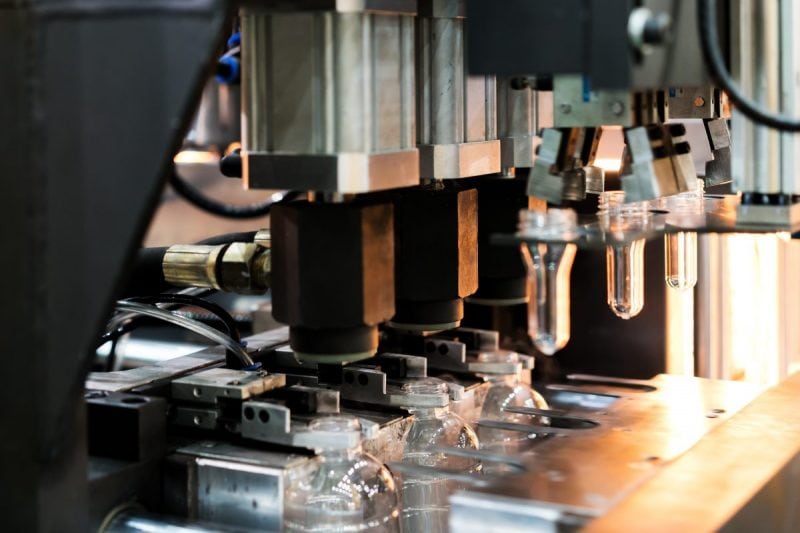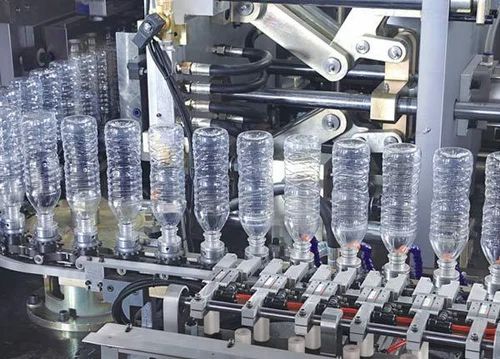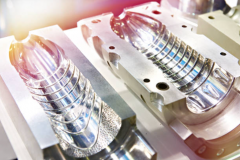Ever marveled at the shape of a plastic bottle or container? That’s the handiwork of “blow molding.” It’s a method that transforms plastic into hollow objects. But here’s the kicker: the magic doesn’t happen without a special tool called a “blow mold.” Made primarily from materials like aluminum, steel, or beryllium-copper, these molds guide the plastic into its final shape. Let’s go with us as we explore the ins and outs of blow molds and the materials that make them. Ready for a fun journey of discovery?

Blow Molding: What Is It? How Does It Work?
Ever wondered how plastic bottles get their shape? It’s all thanks to a process called blow molding. What it is and how it works!
So, what is blow molding? It’s a method used to produce hollow plastic objects. Think of bottles, containers, and other similar items. They all come from this neat process.
Now, let’s break down how it works:
Melting the Plastic: It all starts with plastic pellets. Machines heat these pellets until they melt. This gives us molten plastic.
Forming a Tube: The molten plastic gets shaped into a tube. This tube is called a “parison.” Imagine it as a warm, soft plastic sock!
Blowing the Shape: Here comes the fun part! Air gets blown into the parison. It expands like a balloon. It pushes against the walls of a mold.
Cooling Down: Once the plastic takes the mold’s shape, it needs to cool. Cool air or water helps it harden and set.
Releasing the Product: After cooling, the mold opens. Out comes our plastic item, ready for use!
That’s the magic of blow molding! It’s a quick and efficient way to make many of the plastic items we use daily.
Types of Blow Molding
Remember when we talked about blow molding? Well, it has different types too! Let’s explore the main ones together.
Extrusion Blow Molding (EBM)
- This is the most common type.
- It starts with a hot plastic tube or “parison.”
- The machine drops the parison into a mold.
- Air blows into the parison, inflating it.
- The shape matches the mold’s interior.
- Cool it, open the mold, and voila! You have your object.
Injection Blow Molding (IBM)
- It has two main steps.
- First, a machine injects molten plastic into a mold.
- This creates the neck and body of the product.
- Then, air blows into the molded shape.
- It expands to its final shape inside a second mold.
- This method is great for small, uniform containers.
Stretch Blow Molding (SBM)
- This one is interesting!
- It involves stretching the parison both vertically and horizontally.
- This stretching happens before blowing air in.
- The result? Stronger, clearer, and more durable products.
- Many clear beverage bottles come from this method.
Injection Stretch Blow Molding (ISBM)
- This combines IBM and SBM.
- First, the machine injects plastic to form the neck.
- Then, it heats and stretches the parison.
- After that, blowing shapes it to the final form.
- The end products are super clear and high quality.
Each type has its unique strengths and applications. Whether it’s a milk jug or a clear soda bottle, different blow molding techniques bring them to life. Isn’t it amazing how varied this process can be?

What are blow molds made of? Step-by-step process
So, you’re curious about what makes up blow molds and how we create them? Great choice! Let’s embark on this informative journey together.
Step 1: Design
- Every mold begins with a design.
- Engineers use software to draft the product’s shape.
- They consider function, appearance, and the blow molding process.
- A well-designed mold ensures a flawless final product.
Step 2: Choosing the Material
- The choice depends on the product and quantity.
- For short runs, aluminum might be the pick.
- For high-volume, long-term production, steel could be better.
Step 3: Machining the Mold
- Time to bring the design to life!
- Large machines carve the mold from metal blocks.
- They use the computer design as a guide.
- Precision is key; every detail counts.
Step 4: Polishing and Finishing
- After machining, the mold looks rough.
- Workers polish it to a smooth finish.
- A smooth mold means a smooth plastic product.
- Any imperfections can affect the final result.
Step 5: Adding Vents and Cooling Systems
- Molds need to “breathe.”
- Tiny vents let out air when plastic expands inside.
- Without vents, the product might have defects.
- Cooling systems are equally crucial.
- They circulate water to cool and solidify the plastic faster.
Step 6: Testing the Mold
- Before mass production, a test run is essential.
- The mold goes into a blow molding machine.
- Workers check if the product has the right shape and quality.
- Any issues? Back to the design or machining phase.
Step 7: Mass Production
- With a successful test, it’s go-time!
- The mold can now shape countless plastic items.
- Over time, wear and tear may appear.
- Regular checks ensure the mold remains in top shape.
Step 8: Maintenance and Storage
- Molds have a lifespan, but care can extend it.
- Regular cleaning removes any plastic residue.
- Storing in a dry, cool place prevents rust and damage.
- Periodic checks catch any signs of wear early on.
Blow molds are more than chunks of metal. They’re the result of careful design, precise machining, and regular maintenance. The next time you see a plastic bottle or container, think about the intricate mold behind it. These molds ensure that every curve, edge, and detail is just right.


